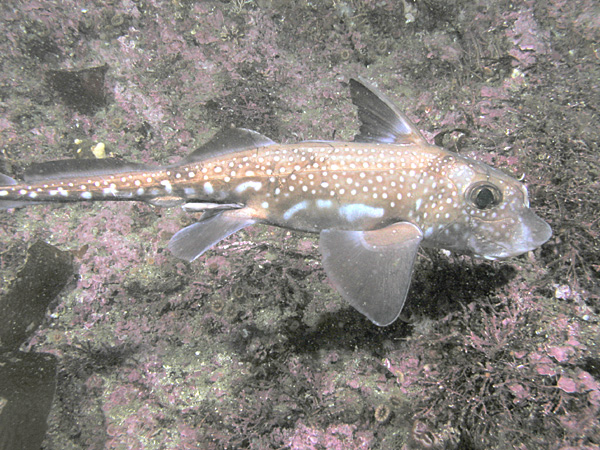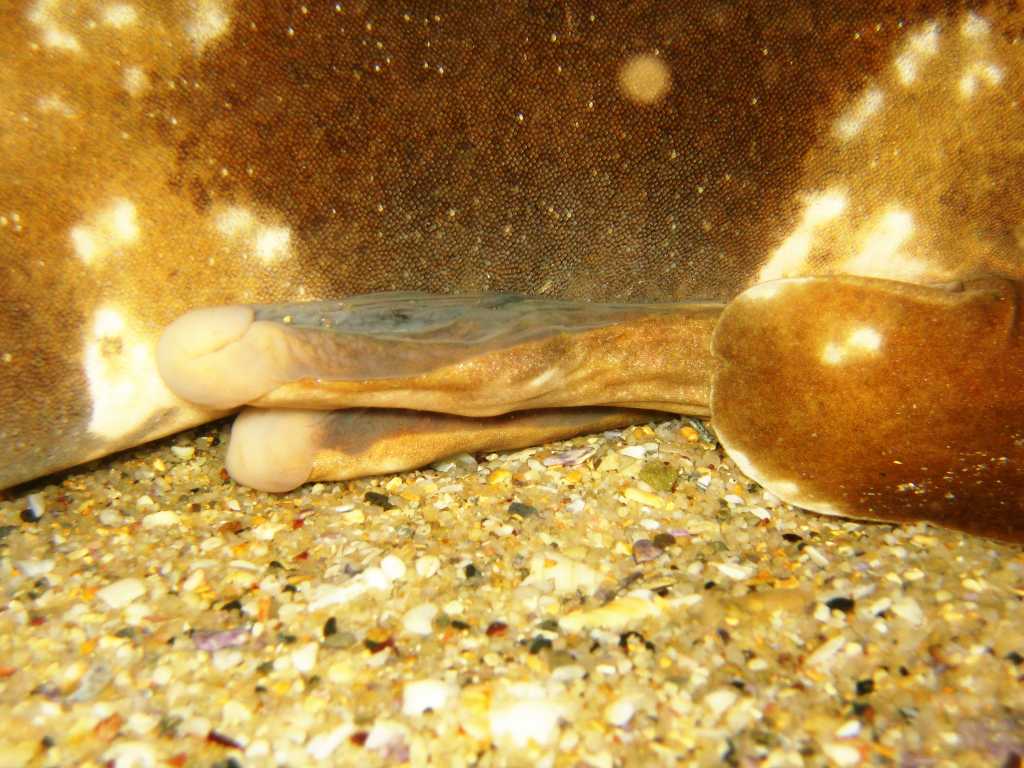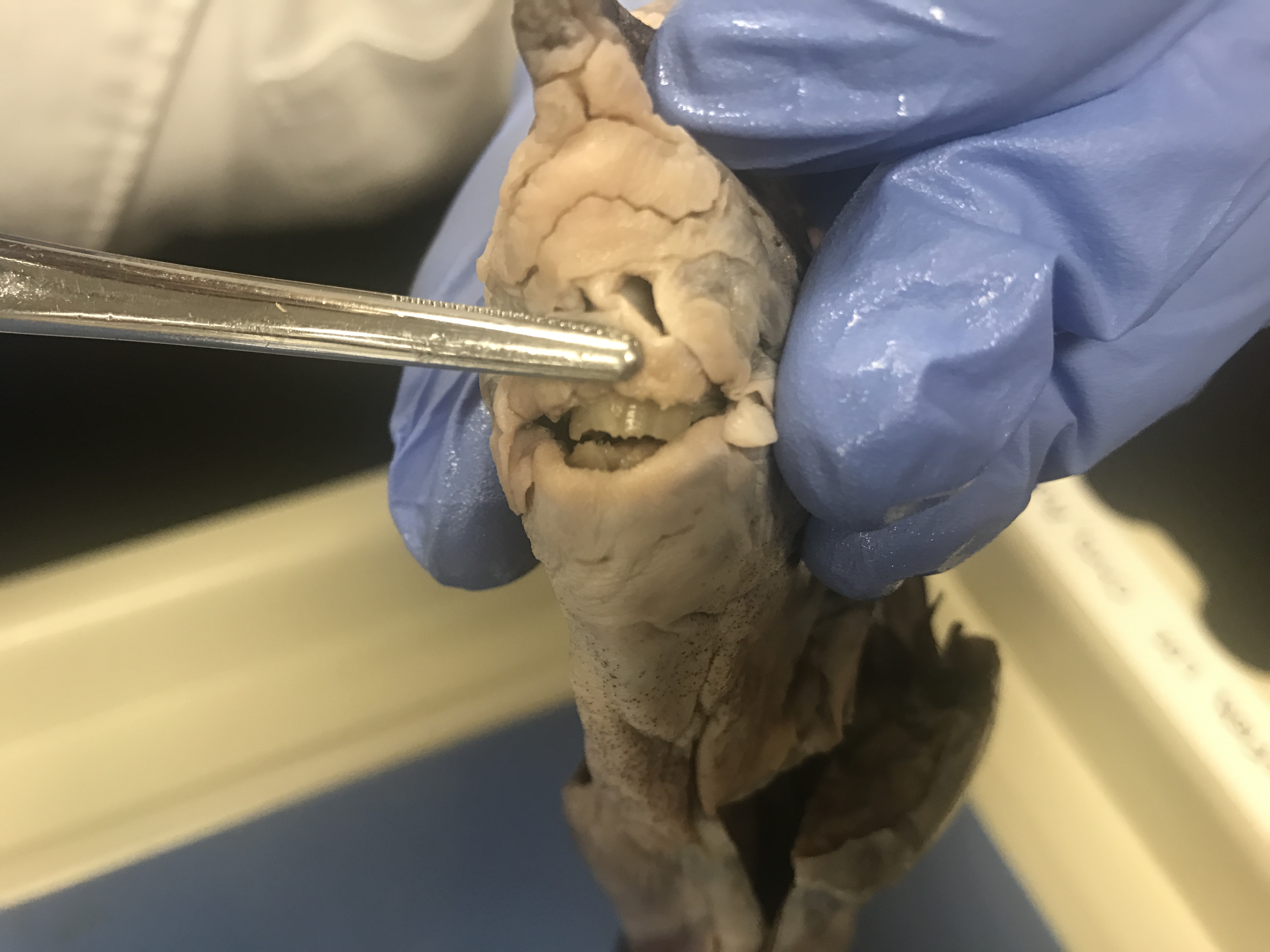|
Chimaeroids
Chimaeras are cartilaginous fish in the order Chimaeriformes , known informally as ghost sharks, rat fish, spookfish, or rabbit fish; the last three names are not to be confused with rattails, Opisthoproctidae, or Siganidae, respectively. At one time a "diverse and abundant" group (based on the fossil record), their closest living relatives are sharks and rays, though their last common ancestor with them lived nearly 400 million years ago. Today, they are largely confined to deep water. Description and habits Chimaeras live in temperate ocean floors down to deep, with few occurring at depths shallower than . Exceptions include the members of the genus ''Callorhinchus'', the rabbit fish and the spotted ratfish, which locally or periodically can be found at shallower depths. Consequently, these are also among the few species from the chimaera order kept in public aquaria. They live in all the oceans except for the Arctic and Antarctic oceans. They have elongated, soft b ... [...More Info...] [...Related Items...] OR: [Wikipedia] [Google] [Baidu] |
Hydrolagus Colliei
The spotted ratfish (''Hydrolagus colliei'') is a chimaera found in the north-eastern Pacific Ocean. Often seen by divers at night in the Pacific Northwest, this cartilaginous fish gets its characteristic name from a pointed rat-like tail. The ratfish lays leathery egg cases on the bottom of muddy or sandy areas, which are often mistaken by divers as something inanimate. While mainly a deep-water species, it occurs at shallower depths in the northern part of its range. The generic name, ''Hydrolagus'', comes from the Greek words ὕδωρ, meaning water,Liddell, H.G. & Scott, R. (1940). ''A Greek-English Lexicon. revised and augmented throughout by Sir Henry Stuart Jones. with the assistance of. Roderick McKenzie.'' Oxford: Clarendon Press. and λαγώς/λαγῶς, meaning hare, and the specific name honors Alexander Collie, who was a ship surgeon and early naturalist. The spotted ratfish is common in much of its range, not typically eaten by humans, and is not commercially ... [...More Info...] [...Related Items...] OR: [Wikipedia] [Google] [Baidu] |
Clasper
In biology, a clasper is a male anatomical structure found in some groups of animals, used in mating. Male cartilaginous fish have claspers formed from the posterior portion of their pelvic fin which serve to channel semen into the female's cloaca during mating. The act of mating in some fish including sharks usually includes one of the claspers raised to allow water into the siphon through a specific orifice. The clasper is then inserted into the cloaca, where it opens like an umbrella to anchor its position. The siphon then begins to contract, expelling water and sperm. The claspers of many shark species have spines or hooks, which may hold them in place during copulation. Male chimaeras have cephalic claspers (tenacula) on their heads, which are thought to aid in holding the female during mating. In entomology, it is a structure in male insects that is used to hold the female during copulation (see Lepidoptera genitalia for more). See also *Sexual coercion among animals ... [...More Info...] [...Related Items...] OR: [Wikipedia] [Google] [Baidu] |
Dorsal Fin
A dorsal fin is a fin located on the back of most marine and freshwater vertebrates within various taxa of the animal kingdom. Many species of animals possessing dorsal fins are not particularly closely related to each other, though through convergent evolution they have independently evolved external superficial fish-like body plans adapted to their marine environments, including most numerously fish, but also mammals such as cetaceans (whales, dolphins, and porpoises), and even extinct ancient marine reptiles such as various known species of ichthyosaurs. Most species have only one dorsal fin, but some have two or three. Wildlife biologists often use the distinctive nicks and wear patterns which develop on the dorsal fins of large cetaceans to identify individuals in the field. The bony or cartilaginous bones that support the base of the dorsal fin in fish are called ''pterygiophores''. Functions The main purpose of the dorsal fin is to stabilize the animal against rollin ... [...More Info...] [...Related Items...] OR: [Wikipedia] [Google] [Baidu] |
Spine (zoology)
In a zoological context, spines are hard, needle-like anatomical structures found in both vertebrate and invertebrate species. The spines of most spiny mammals are modified hairs, with a spongy center covered in a thick, hard layer of keratin and a sharp, sometimes barbed tip. Occurrence Mammals Spines in mammals include the prickles of hedgehogs and among rodents, the quills of both New World and Old World porcupines as well as the prickly fur of spiny mice, spiny pocket mice and spiny rats. They are also found on afrotherian tenrecs, marsupial spiny bandicoots and on echidnas, of the monotremes. An ancient synapsid, '' Dimetrodon'', had extremely long spines on its backbone that were joined together with a web of skin that formed a sail-like structure. Many mammalian species, like cats and fossas, also have penile spines. The Mesozoic eutriconodont mammal ''Spinolestes'' already displayed spines similar to those of modern spiny mice. Fish Spines are found in the rays o ... [...More Info...] [...Related Items...] OR: [Wikipedia] [Google] [Baidu] |
Venom
Venom or zootoxin is a type of toxin produced by an animal that is actively delivered through a wound by means of a bite, sting, or similar action. The toxin is delivered through a specially evolved ''venom apparatus'', such as fangs or a stinger, in a process called envenomation. Venom is often distinguished from poison, which is a toxin that is passively delivered by being ingested, inhaled, or absorbed through the skin, and toxungen, which is actively transferred to the external surface of another animal via a physical delivery mechanism. Venom has evolved in terrestrial and marine environments and in a wide variety of animals: both predators and prey, and both vertebrates and invertebrates. Venoms kill through the action of at least four major classes of toxin, namely necrotoxins and cytotoxins, which kill cells; neurotoxins, which affect nervous systems; myotoxins, which damage muscles; and haemotoxins, which disrupt blood clotting. Venomous animals cause tens of thousa ... [...More Info...] [...Related Items...] OR: [Wikipedia] [Google] [Baidu] |
Placoid Scale
A fish scale is a small rigid plate that grows out of the skin of a fish. The skin of most jawed fishes is covered with these protective scales, which can also provide effective camouflage through the use of reflection and colouration, as well as possible hydrodynamic advantages. The term ''scale'' derives from the Old French , meaning a shell pod or husk. Scales vary enormously in size, shape, structure, and extent, ranging from strong and rigid armour plates in fishes such as shrimpfishes and boxfishes, to microscopic or absent in fishes such as eels and anglerfishes. The morphology of a scale can be used to identify the species of fish it came from. Scales originated within the jawless ostracoderms, ancestors to all jawed fishes today. Most bony fishes are covered with the cycloid scales of salmon and carp, or the ctenoid scales of perch, or the ganoid scales of sturgeons and gars. Cartilaginous fishes (sharks and rays) are covered with placoid scales. Some species are cov ... [...More Info...] [...Related Items...] OR: [Wikipedia] [Google] [Baidu] |
Cartilage
Cartilage is a resilient and smooth type of connective tissue. In tetrapods, it covers and protects the ends of long bones at the joints as articular cartilage, and is a structural component of many body parts including the rib cage, the neck and the bronchial tubes, and the intervertebral discs. In other taxa, such as chondrichthyans, but also in cyclostomes, it may constitute a much greater proportion of the skeleton. It is not as hard and rigid as bone, but it is much stiffer and much less flexible than muscle. The matrix of cartilage is made up of glycosaminoglycans, proteoglycans, collagen fibers and, sometimes, elastin. Because of its rigidity, cartilage often serves the purpose of holding tubes open in the body. Examples include the rings of the trachea, such as the cricoid cartilage and carina. Cartilage is composed of specialized cells called chondrocytes that produce a large amount of collagenous extracellular matrix, abundant ground substance that is rich in pro ... [...More Info...] [...Related Items...] OR: [Wikipedia] [Google] [Baidu] |
Gill
A gill () is a respiratory organ that many aquatic organisms use to extract dissolved oxygen from water and to excrete carbon dioxide. The gills of some species, such as hermit crabs, have adapted to allow respiration on land provided they are kept moist. The microscopic structure of a gill presents a large surface area to the external environment. Branchia (pl. branchiae) is the zoologists' name for gills (from Ancient Greek ). With the exception of some aquatic insects, the filaments and lamellae (folds) contain blood or coelomic fluid, from which gases are exchanged through the thin walls. The blood carries oxygen to other parts of the body. Carbon dioxide passes from the blood through the thin gill tissue into the water. Gills or gill-like organs, located in different parts of the body, are found in various groups of aquatic animals, including mollusks, crustaceans, insects, fish, and amphibians. Semiterrestrial marine animals such as crabs and mudskippers have gill cham ... [...More Info...] [...Related Items...] OR: [Wikipedia] [Google] [Baidu] |
Public Aquaria
A public aquarium (plural: ''public aquaria'' or ''public Water Zoo'') is the aquatic counterpart of a zoo, which houses living aquatic animal and plant specimens for public viewing. Most public aquariums feature tanks larger than those kept by home aquarists, as well as smaller tanks. Since the first public aquariums were built in the mid-19th century, they have become popular and their numbers have increased. Most modern accredited aquariums stress conservation issues and educating the public.Visitor Impact accessed 3 February 2007. History [...More Info...] [...Related Items...] OR: [Wikipedia] [Google] [Baidu] |
Spotted Ratfish
The spotted ratfish (''Hydrolagus colliei'') is a chimaera found in the north-eastern Pacific Ocean. Often seen by divers at night in the Pacific Northwest, this cartilaginous fish gets its characteristic name from a pointed rat-like tail. The ratfish lays leathery egg cases on the bottom of muddy or sandy areas, which are often mistaken by divers as something inanimate. While mainly a deep-water species, it occurs at shallower depths in the northern part of its range. The generic name, ''Hydrolagus'', comes from the Greek words ὕδωρ, meaning water,Liddell, H.G. & Scott, R. (1940). ''A Greek-English Lexicon. revised and augmented throughout by Sir Henry Stuart Jones. with the assistance of. Roderick McKenzie.'' Oxford: Clarendon Press. and λαγώς/λαγῶς, meaning hare, and the specific name honors Alexander Collie, who was a ship surgeon and early naturalist. The spotted ratfish is common in much of its range, not typically eaten by humans, and is not commercially c ... [...More Info...] [...Related Items...] OR: [Wikipedia] [Google] [Baidu] |
Chimaera Monstrosa
''Chimaera monstrosa'', also known as the rabbit fish or rat fish, is a northeast Atlantic Ocean, Atlantic and Mediterranean Sea, Mediterranean species of cartilaginous fish in the family Chimaeridae. The rabbit fish is known for its characteristically large head and small, tapering body. With large eyes, nostrils, and tooth plates, the head gives them a rabbit-like appearance, hence the nickname “Rabbit fish”. They can grow to and live for up to 30 years. Description The appearance of ''C. monstrosa'' shares characteristics of its distant relatives, sharks. It characteristically has a large head and a tapering body that ends in its whip-like tail, and has a short snout with an overhanging mouth. The top dorsal fin is positioned high on the spine of the fish, and is triangular and tall in height. Positioned in the mid-section of the fish, the spine runs throughout the length of the fish and continuously joins with the upper part of the caudal fin; this dorsal spine is als ... [...More Info...] [...Related Items...] OR: [Wikipedia] [Google] [Baidu] |










